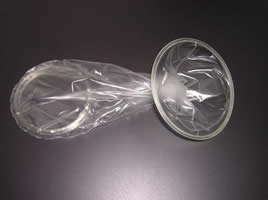 Evaluating the introduction of new female condom products in South Africa
Evaluating the introduction of new female condom products in South Africa
Beksinska M, Zulu B, Nkosi P, Mabude Z, Smit J. Offering choice in female condoms: The South African experience. International Journal of STDs & AIDS. 2019 Jul 8.
South Africa (SA) has an integrated male and female condom (FC) programme. Since 2014, the programme has introduced two new FC brands. This study evaluated the early introduction of the availability of new FCs. Twenty-three sites participating in the National SA Female Condom Evaluation were included. Providers and clients completed interviewer-administered questionnaires assessing FC brand availability, length of distribution, how clients are informed about new FCs and reactions to the choice of more than one FC. A total of 55 providers and 51 clients were interviewed. Although all 23 sites reported they had distributed new FCs, only one had all three types available. Almost all providers (96%) thought it was important to increase choice, although some (27%) worried that having different FCs may confuse clients. Almost all clients (96%) felt it was important to increase the choice of FCs, and most women (80%) felt that using one type of FC would make it easy to use another type. Providers called for more brand-specific Information, Education and Communication (IEC) training for themselves and the community. Providers and clients seem to be very positive about the choice of FCs. Providers recommended more support in the form of IEC materials and training to assist in the provision of the expansion of FC brands.
Safety of a vaginal gel delivered by a single-size diaphragm
Thurman A, Cunningham T, Fichorova R, Herold BC, Hillier SL, Chandra N, Doncel GF. A phase I randomized safety study of a single-size silicone rubber diaphragm used with or without a lactic-acid-containing diaphragm gel. Contraception. 2019 Aug 21.
OBJECTIVES: To evaluate a lactic-acid-containing diaphragm gel (Contragel®) approved outside the United States for use with a silicone rubber diaphragm (Caya®). The study gel is being evaluated as a safer alternative to nonoxynol-9 (N-9) gel, which has been associated with risk of increasing susceptibility to human immunodeficiency virus (HIV).
STUDY DESIGN: This was a Phase I randomized, parallel study evaluating the safety of the novel diaphragm gel versus hydroxyethylcellulose (HEC) universal placebo gel delivered by the study diaphragm for two 7-day test cycles of daily use, without and with intercourse. The primary clinical safety endpoint was treatment emergent adverse events. Mucosal safety endpoints included colposcopic findings, anti-Escherichia coli activity of endocervical and vaginal fluid, immune mediators, Nugent score and ectocervical immune cell density. Endpoints were assessed prior to each test cycle and at day 7 of each test cycle. We compared the two independent groups and also evaluated paired changes from baseline in each gel cohort.
RESULTS: Twenty-three participants used the study diaphragm with the novel gel (n=11) or with HEC (n=12). Use of either gel resulted in few genital AEs and no colposcopic findings. There were no differences in ectocervical histology and lymphocyte density or phenotype between the two cohorts at baseline or after each test cycle. We found no clinically important differences in the anti-microbial (anti Escherichia coli) activity of endocervical or vaginal fluid or concentrations of genital immune mediators (e.g. anti-inflammatory secretory leukocyte protease inhibitor (SLPI) or pro-inflammatory mediator RANTES) between the two gel cohorts at any visit. There were no important paired changes from baseline among participants using either gel in Nugent score, ectocervical histology or anti-microbial activity of genital secretions.
CONCLUSIONS: We found no clinically significant differences in clinical and mucosal safety endpoints between the two cohorts. The mucosal safety profiles of the study gel and HEC placebo gel were similar.
IMPLICATIONS: Our data demonstrate no clinically important differences between the safety profiles of the lactic-acid-containing diaphragm gel versus HEC placebo gel when used with the study diaphragm. N-9 can no longer be used with contraceptive diaphragms in high HIV prevalence regions. Although larger studies are needed, the novel gel appears safe for use with the study diaphragm, which is the first over-the-counter, non-hormonal, diaphragm.

